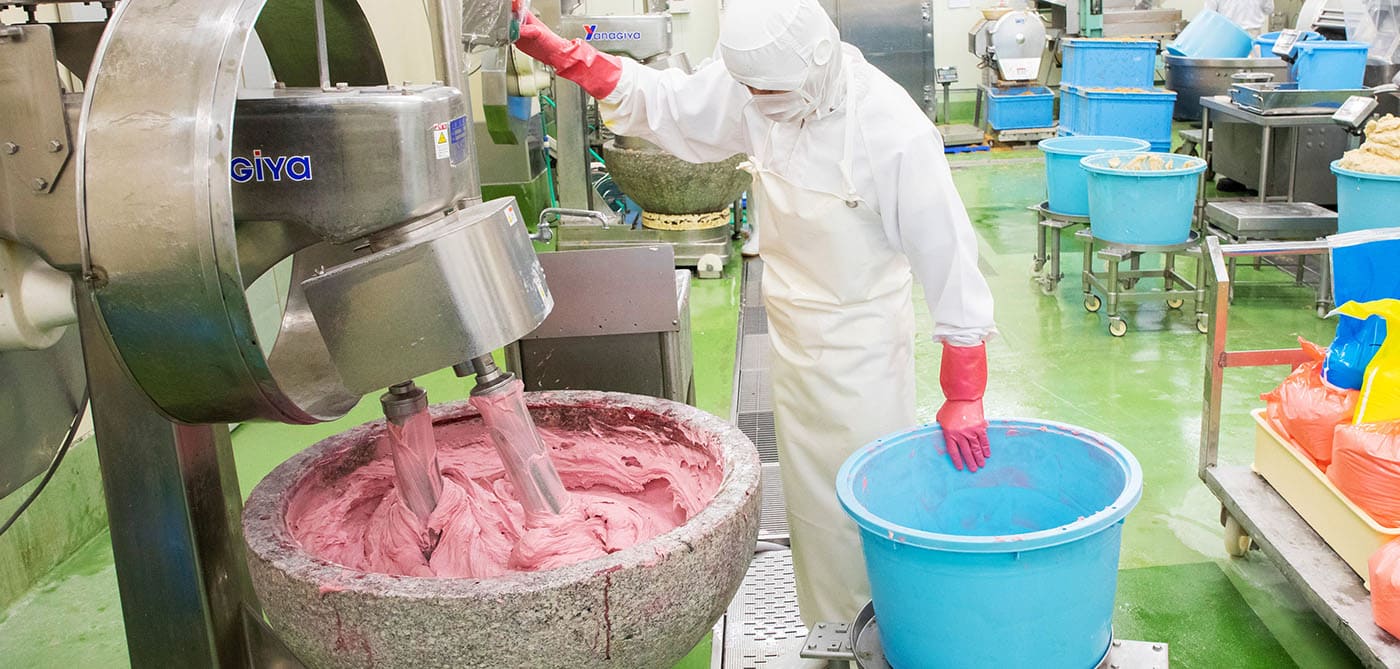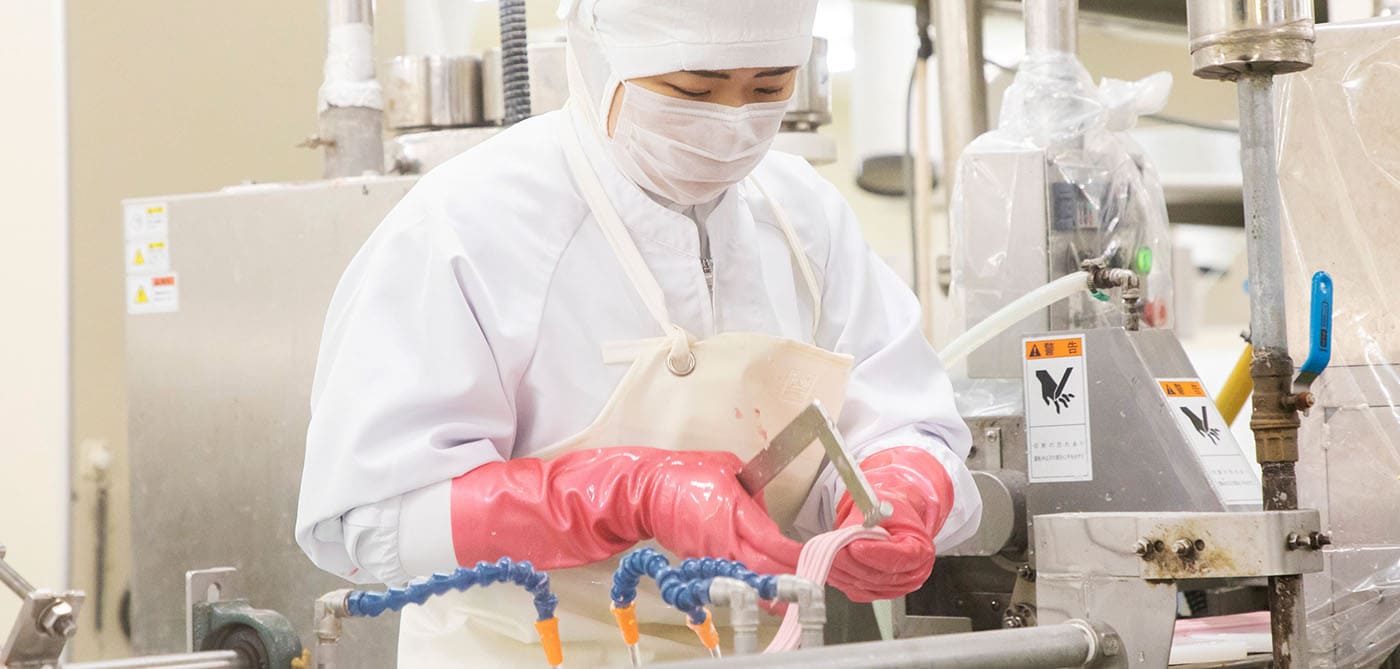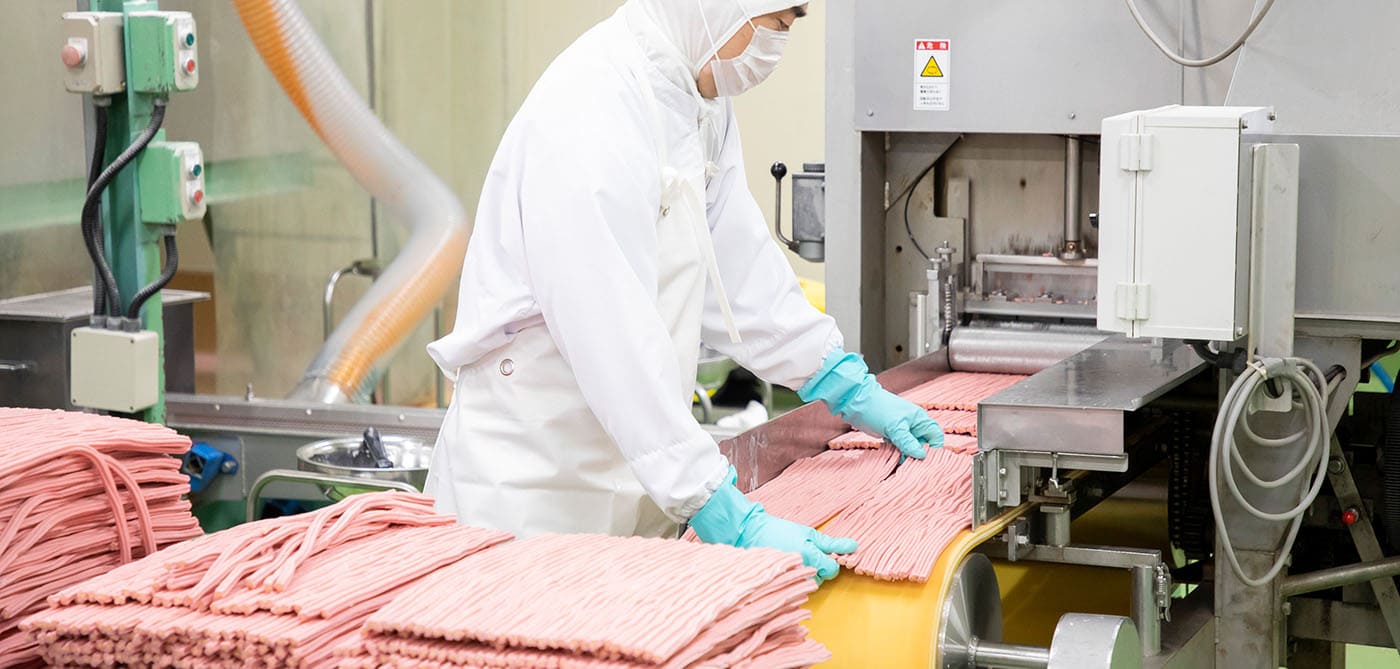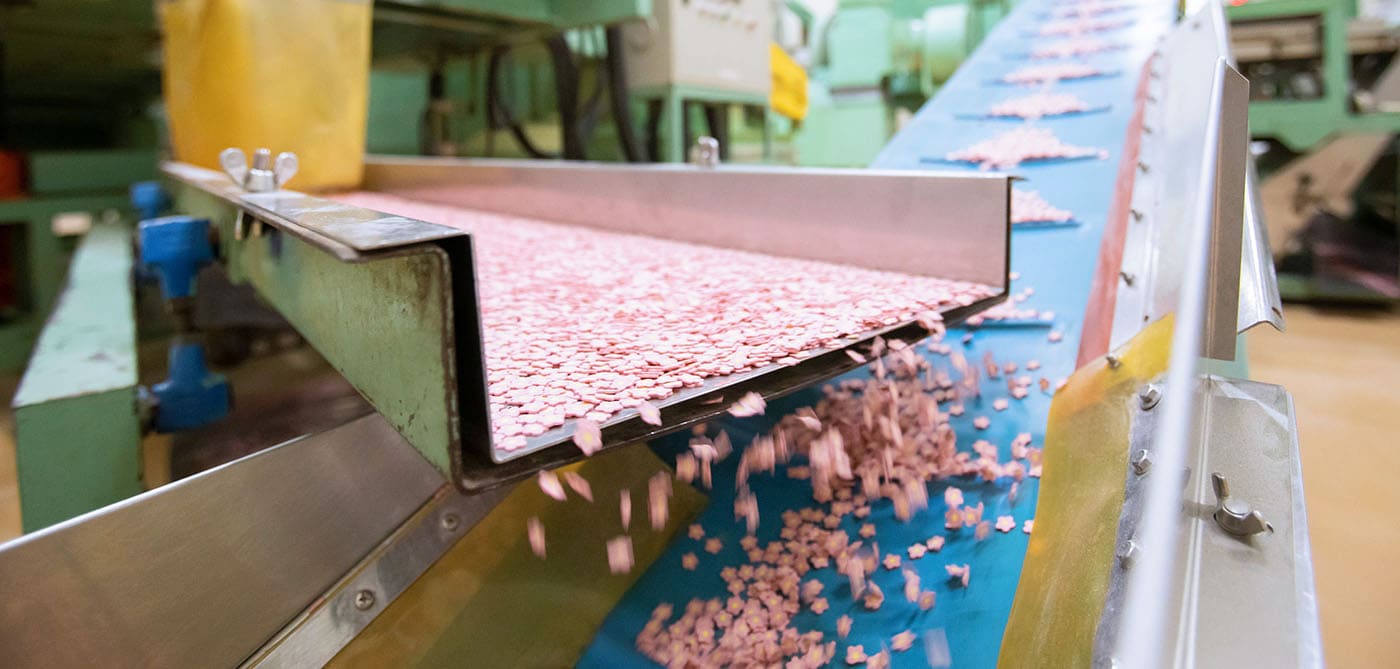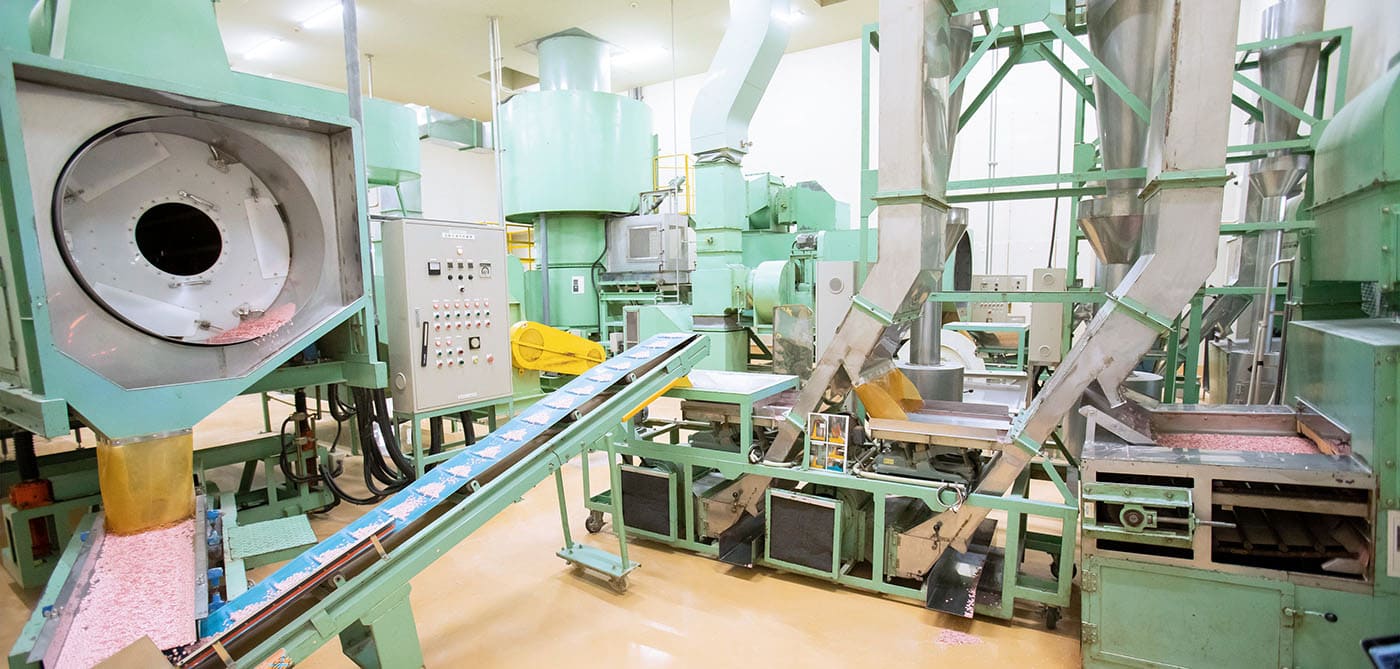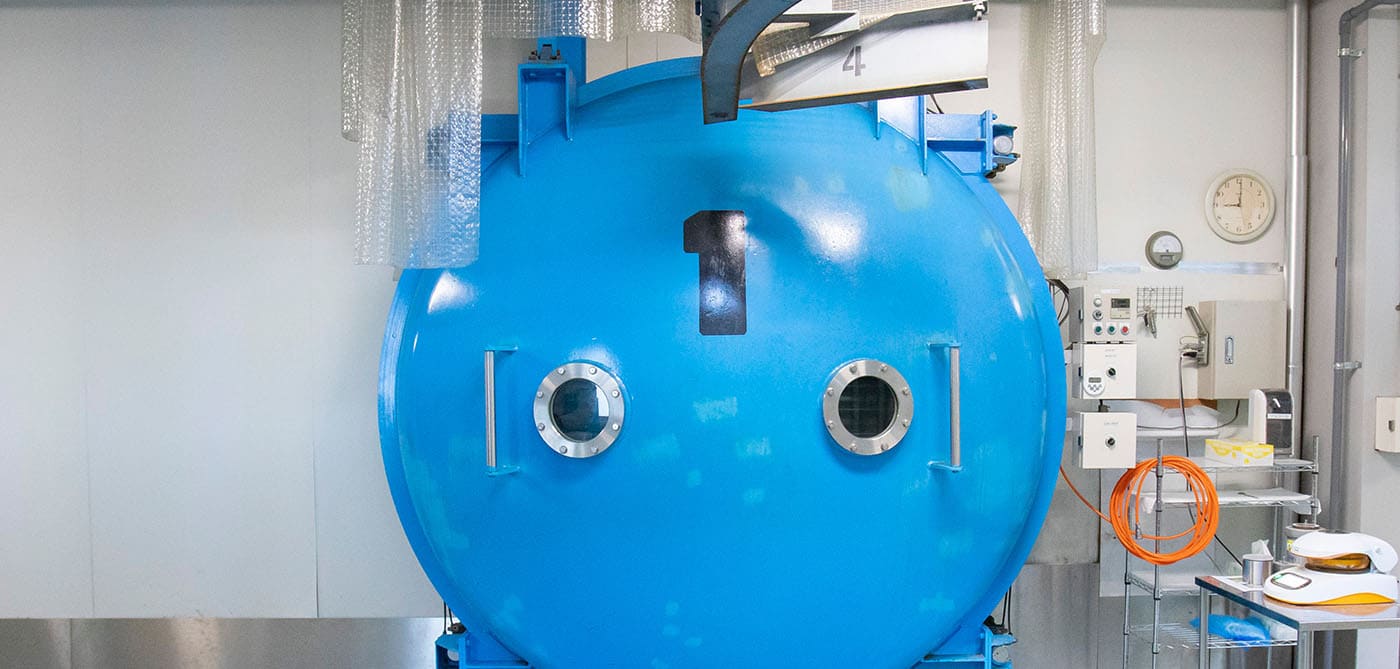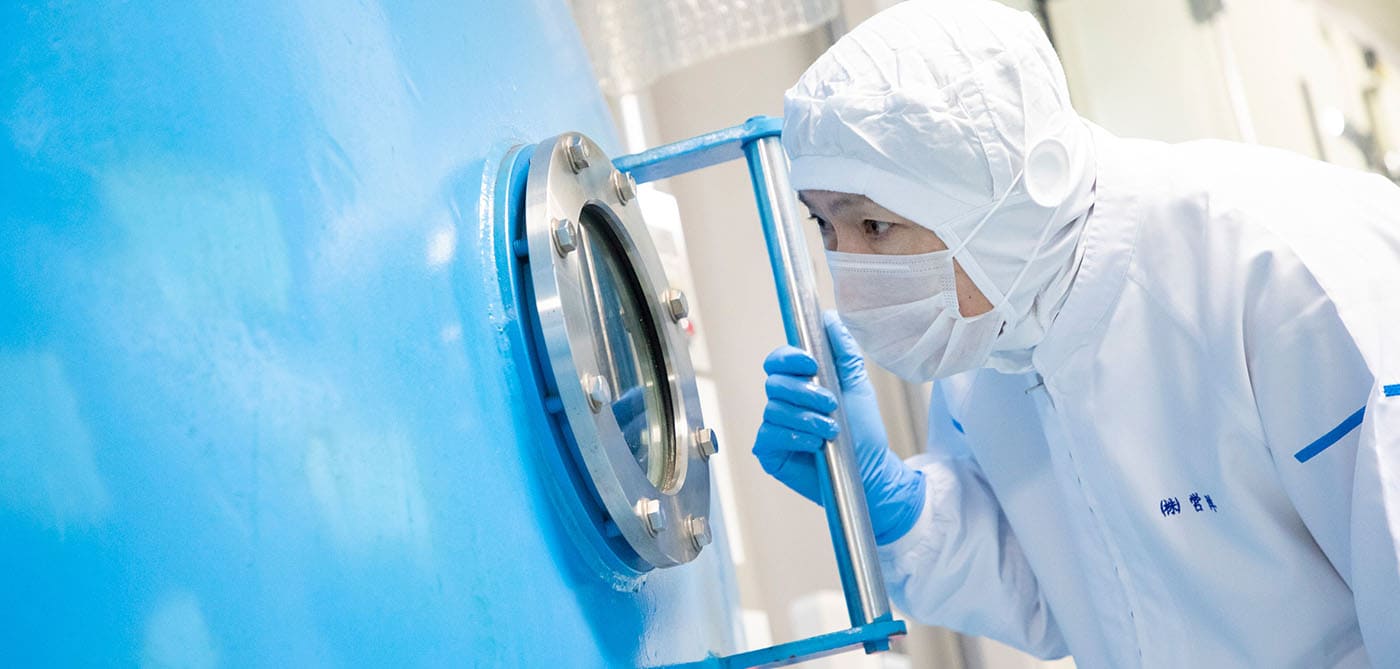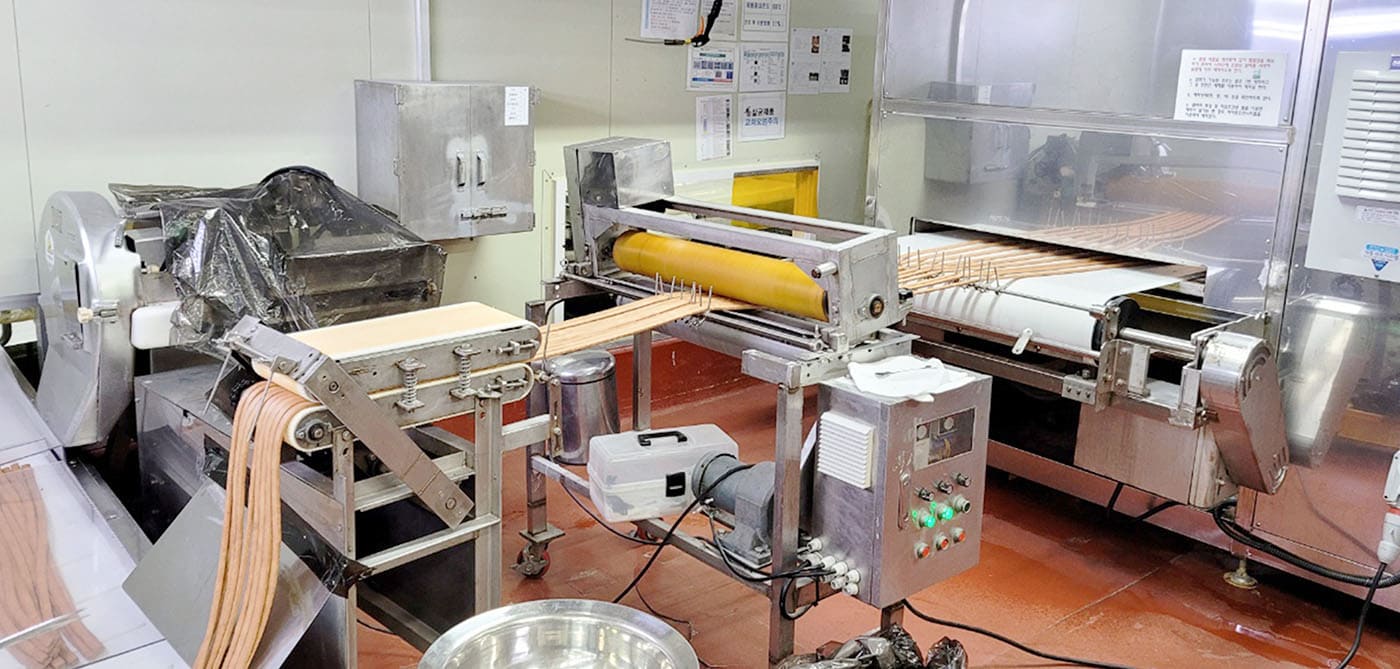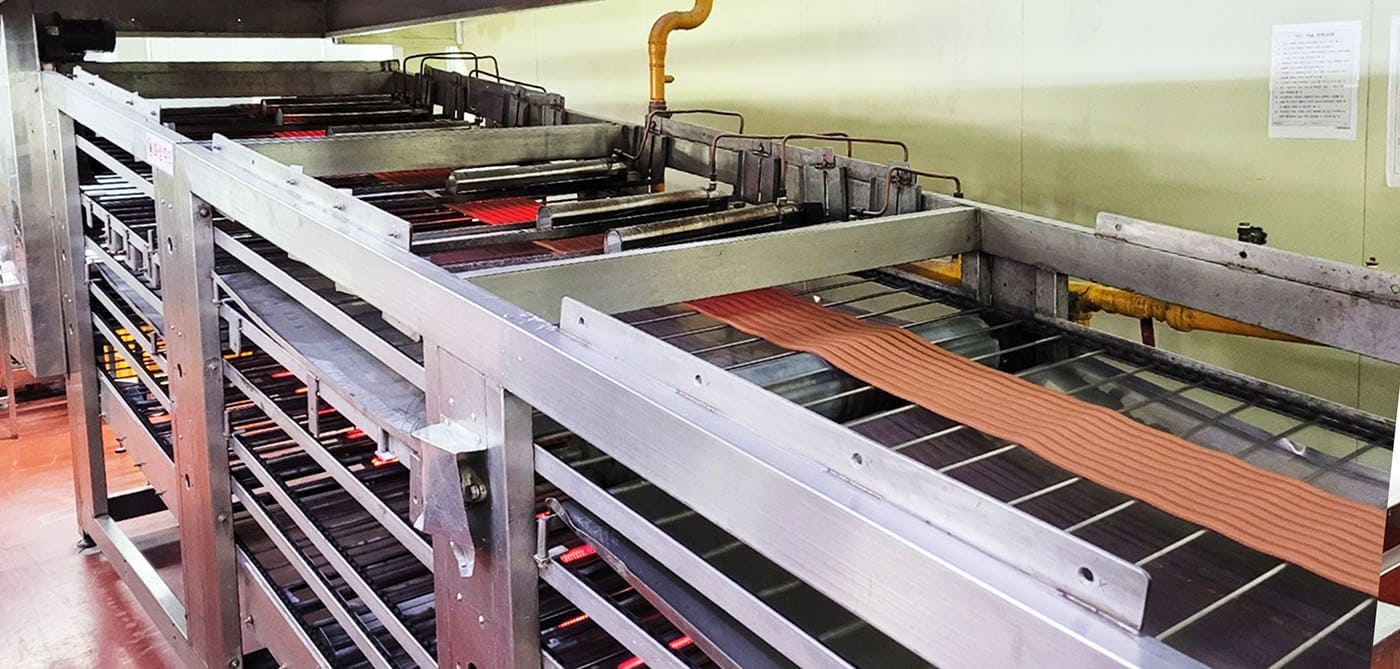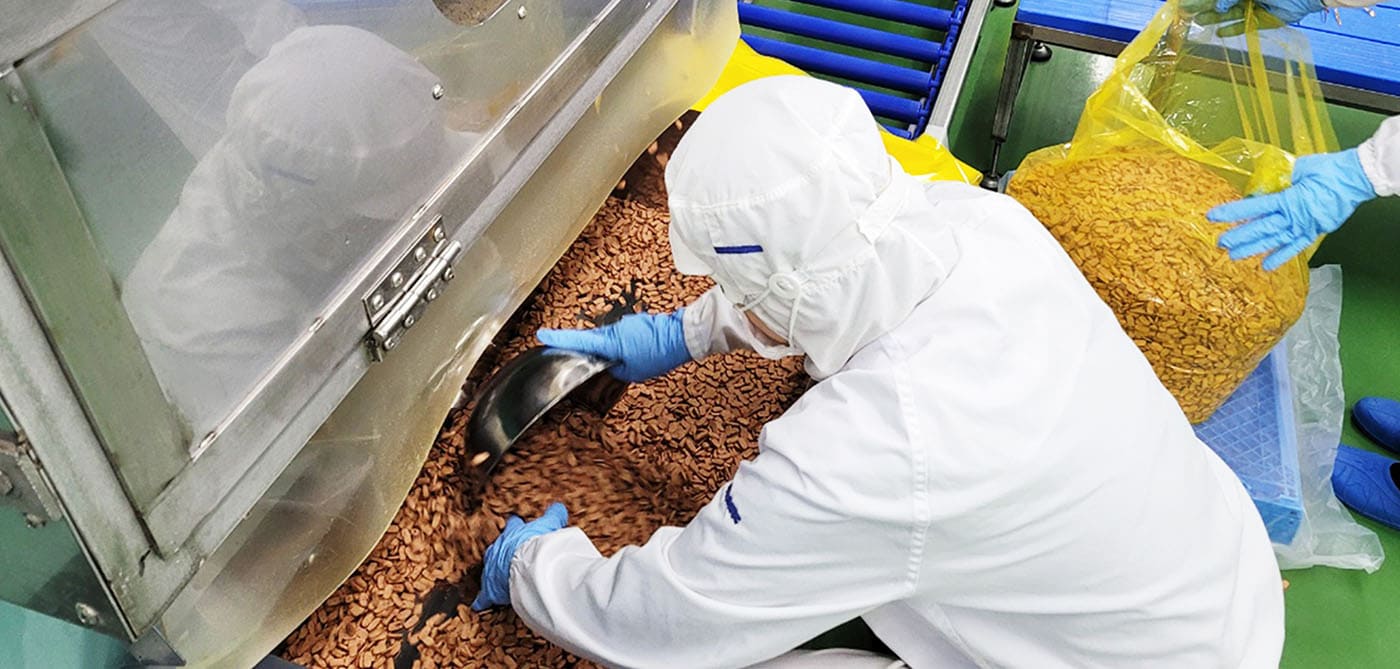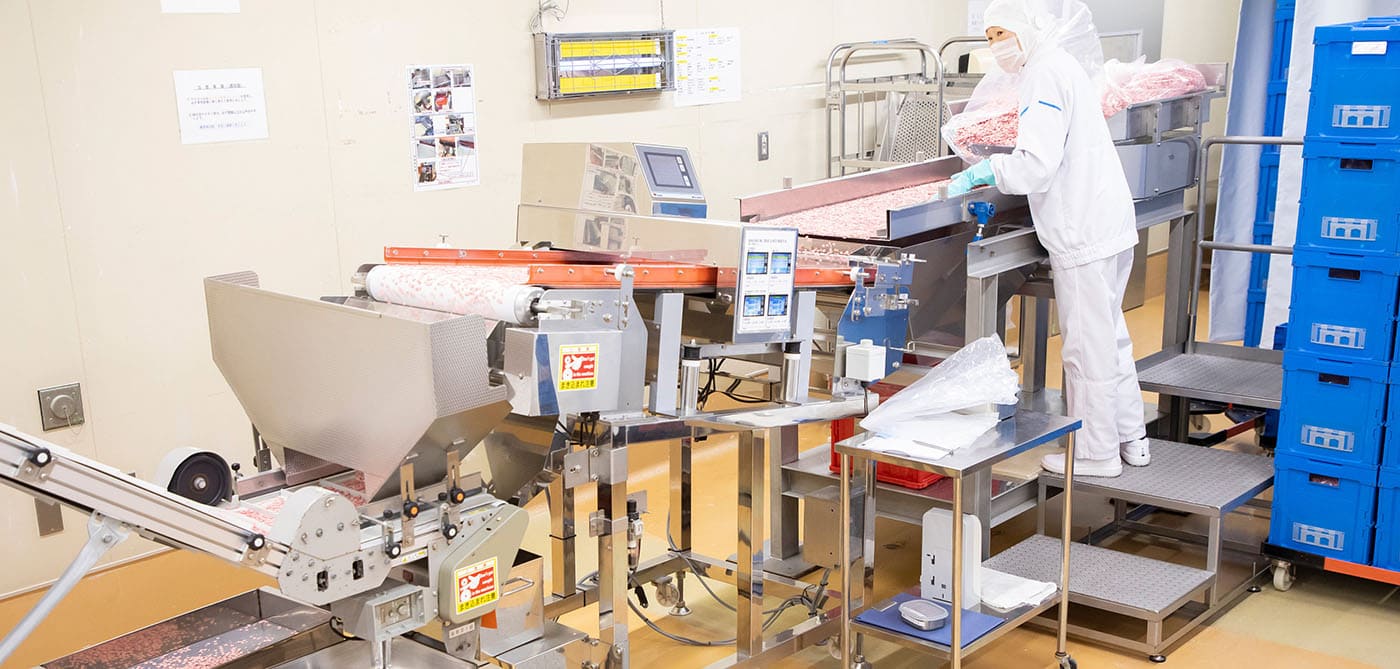Manufacturing Method
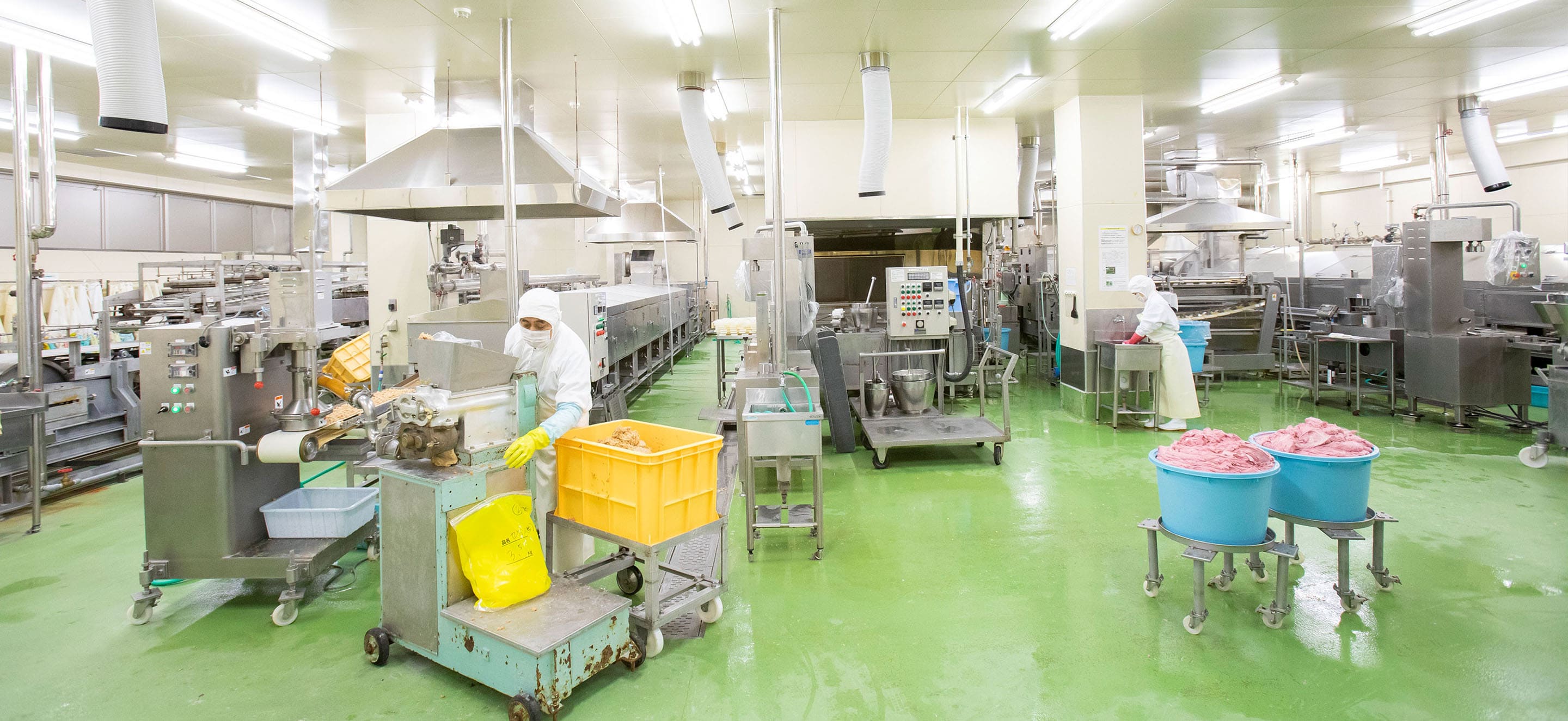
We make high quality products
with thorough quality control and unique technology
with thorough quality control and unique technology
From molding to drying, sorting, and packaging.
We introduce each process from product manufacturing to shipping.
We introduce each process from product manufacturing to shipping.
01
Molding Process
Carefully selected ingredients are formed with skillful techniques. Seasonings and other ingredients are added to fish paste to create a paste of meat, which is then passed through a forming machine. After the process, the meat is cut into specified lengths and heated as necessary. Then, the heated fish paste is cooled and frozen in a freezer.
①Defrosting
②Mixing
③Forming
④Heating
⑤Alignment
Air Drying
Freeze Drying
Microwave Drying
02
Drying Process
Frozen kamaboko are cut into thin tips and dried. The products are placed in an air-drying machine and dried with hot air. Because the material is made to float and flow, there are almost no unevenness, adhesion, or loss of shape. After drying, the materials are passed through a specific gravity sorter to remove defective cuttings and stored as semi-finished products.
①Defrosting
②Cutting
③Flow-through primary drying
④Rotary secondary drying
⑤Wind sorting
⑥Tentative packing
02
Drying Process
Frozen kamabokos are cut into thin slices and dried. The products are placed in a freeze-drying machine and vacuum freeze-dried. Compared to hot-air drying, freeze-drying is characterized by less loss of aroma and nutrients because the frozen materials are sublimate dried under vacuum and low temperature. After drying, the material is passed through a specific gravity sorting machine to remove defective cuttings, and then stored as semi-finished products.
①Defrosting
②Preparing
③Pre-freezing
④Vacuum freeze drying
⑤Taking out from the oven
(humidity control for some products)
(humidity control for some products)
⑥Tentative packing
02
Drying Process
Frozen fish cakes are cut into thin slices and placed in a microwave heating machine for drying. Microwaves are transmitted to the center of the food and rapidly heat up and evaporate, leaving gaps where water used to be inside the food, resulting in a product with a light texture and good restorability. After drying, the materials are passed through a specific gravity sorting machine to remove defective cuttings, and then stored as semi-finished products.
①Molding
②Roasting
③Microwave drying
④Cutting
⑤Cooling
⑥Tentative packing
03
Selection Process
Defective products are removed from semi-finished products by visual sorting and then transferred to machine sorting. The machine carefully checks for cracks, chips, small foreign objects that cannot be visually removed, and removes them.
①Visual sorting
②Vibration sieving
③Metal detector
④X-ray check
⑤Color sorter
⑥Sorting on conveyor belt
04
Packing Process
After filling the internal bag with Kamaboko and weighing, the top of the bag is sealed with a heat seal. Finally, the products are packaged for storage and shipped to the customer according to the order.
①Interior packaging
②Outer box packaging
③Shipping


